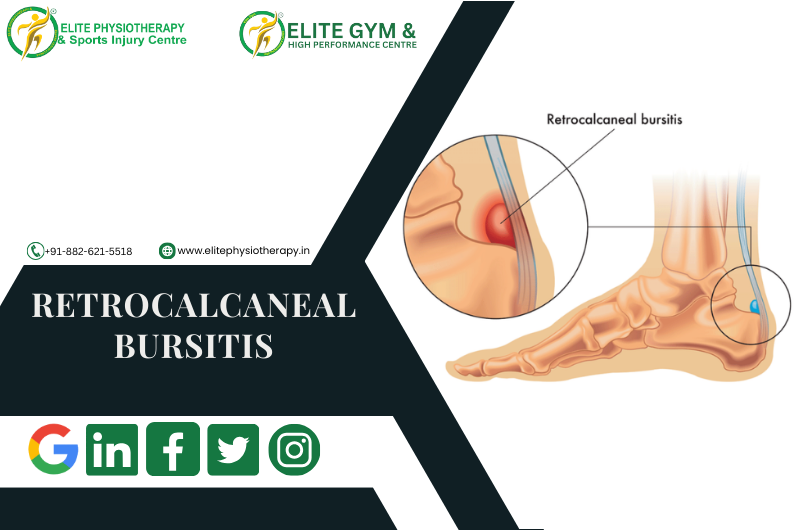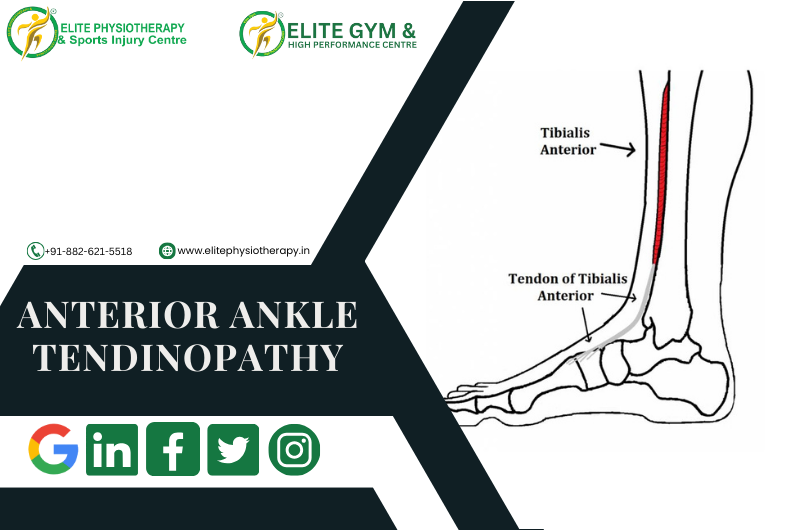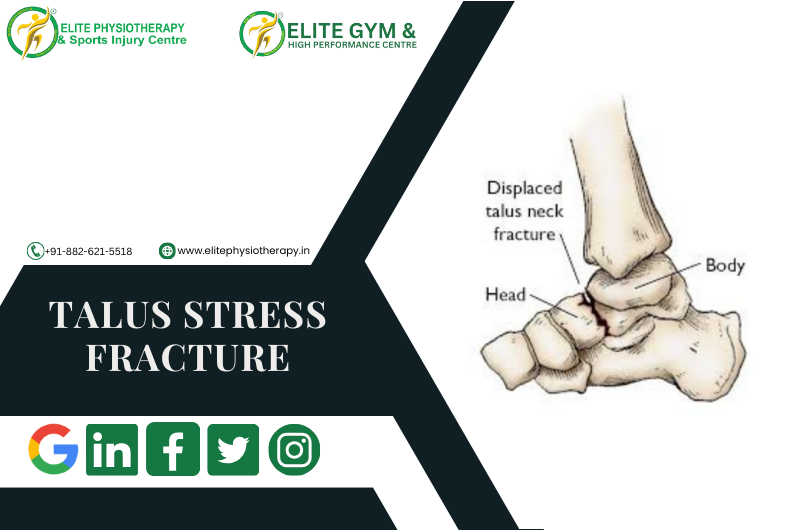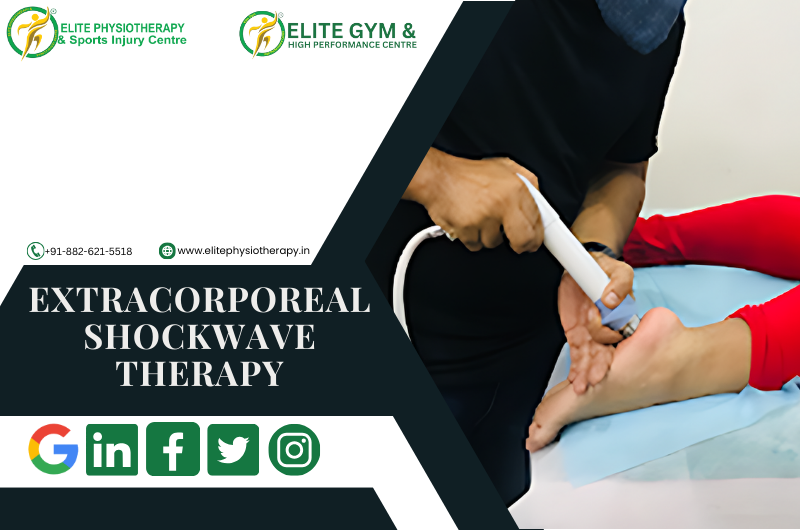What is Haglund’s deformity?
A bony growth on the rear of the heel, where the Achilles tendon connects to the calcaneus (heel bone), is known as Haglund’s deformity. This illness frequently causes pain, swelling, and discomfort, which majorly impacts day-to-day functioning and sports performance. Our specialty at Elite Physiotherapy and Sports Injury Centre is the thorough evaluation and treatment of Haglund’s deformity through the use of state-of-the-art physiotherapy methods and innovative treatment approaches.
Causes and Mechanism of Injury
Repetitive pressure, friction, and biomechanical abnormalities aggravating the soft tissues surrounding the heel bone cause Haglund’s deformity. Its development is influenced by several factors, including:
- Genetic Predisposition: Excessive pressure on the rear of the heel is more likely to occur in people with tight Achilles tendons or high arches in their feet.
- Inappropriate Footwear: The issue may worsen if you wear tight, stiff, or high-heeled shoes that cause friction against the heel bone.
- Overuse and Repetitive Stress: The Achilles tendon and heel bone are constantly under stress from athletes and participants in sports like running, sprinting, and jumping.
- Poor Biomechanics: Excessive pronation, excessive supination, or abnormal walking patterns can all lead to excessive pressure on the heel’s back.
- Tight Achilles Tendon: A shortened Achilles tendon can cause limited ankle dorsiflexion, which can put more strain on the heel bone.
Signs and Symptoms of Haglund’s Deformity
The common symptoms include:
- There is a noticeable bony mass on the heel’s back.
- Pain and tenderness at the enlargement location, particularly when running or walking.
- Swelling and redness are brought on by inflammation of the soft tissues around it.
- Achilles tendon inflammation causes stiffness and restricted ankle movement.
- Increased pain when wearing shoes, particularly ones with stiff heel counters.
Diagnostic Methods at Elite Physiotherapy and Sports Injury Centre
For assessing the degree and impact of Haglund’s deformity, we at Elite Physiotherapy and Sports Injury Centre use a comprehensive diagnostic process that consists of both functional and physical evaluations.
Clinical and Functional Assessment
- Visual Inspection: Recognizing the distinctive heel bump, redness, and swelling.
- Palpation: Measuring localized swelling and discomfort to gauge the level of irritation.
- Range of Motion (ROM) Tests: Assessing Achilles tendon and ankle flexibility to identify motion restrictions.
- Gait analysis is the process of evaluating walking patterns in order to find biomechanical anomalies that are causing excessive heel stress.
- Special Physiotherapy Tests:
- Passive Ankle Dorsiflexion Test: To determine how tight the Achilles tendon is, use the passive ankle dorsiflexion test.
- Heel Raise Test: The heel raise test is used to assess mobility and discomfort when using the calf muscles.
- Tibial Nerve Stretch Test: To rule out nerve involvement causing posterior heel discomfort, use the tibial nerve stretch test.
Physiotherapy Management at Elite Physiotherapy and Sports Injury Centre
In order to prevent recurrence, our physiotherapy-based treatment aims to improve mobility, lessen pain, and address the underlying biomechanical problems.
1. Management of Pain and Inflammation
- Cryotherapy: Often known as ice therapy, numbs severe pain and reduces swelling.
- Shock Wave Therapy: By improving blood circulation, shock wave therapy promotes tissue healing and lowers inflammation.
- High-Intensity Class 4 Laser Therapy: Provides deep-penetrating light energy to the afflicted area, accelerating cellular repair.
2. Improving Mobility and Flexibility
- Manual therapy: mobilization methods to enhance Achilles tendon flexibility and joint mechanics.
- Stretching Exercises:
- Stretches for the calf and Achilles to increase range of motion and reduce stress.
- Stretching the plantar fascia can improve foot mobility.
3. Strengthening the Lower Limb and Foot Muscles
- Specific Strengthening Exercises:
- To strengthen and lessen tension on the Achilles tendon, use eccentric heel drops.
- Exercises for the foot’s intrinsic muscles to improve arch stability.
- Exercises using resistance bands to stabilize the ankles.
4. Gait training and biomechanical adjustments
- Super Inductive System: Enhances gait function by activating neuromuscular areas using electromagnetic fields.
- Custom Orthotics and Footwear Modifications: The purpose of custom orthotics and footwear modifications is to reduce pressure on the heel and correct aberrant biomechanics.
- Taping and Bracing: Reduces tension in the afflicted area and offers structural support.
5. Cutting-edge techniques for Quicker Recovery
- CRET Therapy: Promotes blood circulation and deep tissue healing.
- Hydrotherapy (Aquatic Therapy): By lowering weight-bearing stress, hydrotherapy (also known as aquatic treatment) enables pain-free movement and strengthening.
Conclusion
At Elite Physiotherapy and Sports Injury Centre, we provide state-of-the-art treatments in conjunction with skilled physiotherapy techniques to ensure optimal healing. If you are dealing with chronic heel pain, get in touch with us today for a thorough evaluation and a customized rehabilitation program. Haglund’s deformity can have a significant impact on mobility and overall quality of life, but effective relief and recovery are achievable with an accurate diagnosis and an individualized physiotherapy plan.









